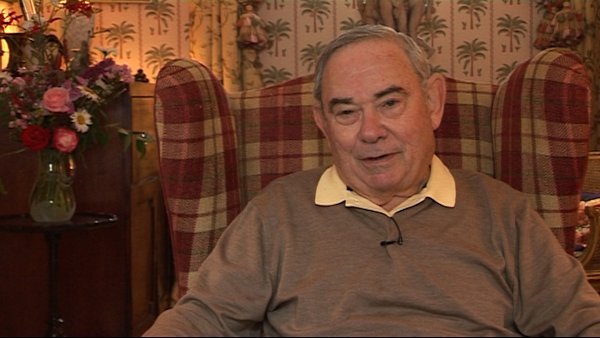NEXT STORY

Woodring Wright's experiment with the cell nucleus
RELATED STORIES

NEXT STORY

Woodring Wright's experiment with the cell nucleus
RELATED STORIES



Now I will return to my laboratory work done in the field of biology, fundamental biology of aging, and pursue this question of the replicometer, which I proposed as a name for some unknown mechanism that hypothetically caused cells to have the memory that they did, and to explain why there was a rather narrow window in respect to the number of population doublings that the cells underwent when derived from many different foetal donors. The next event that occurred in my laboratory, it occurred early on at Stanford, when one of my students, by the name of Woodring Wright, W-R-I-G-H-T – Woody, as he was known to all of us – had his... was working for his MD at Stanford, and also was pursuing a Ph.D. simultaneously. Stanford at the time had a program that permitted that possibility. Woody decided to do his Ph.D. dissertation in my laboratory. We welcomed him, and it turned out he was a very bright fellow, and he became familiar – of course, he already knew about much of my work – but he became familiar with my wish to pursue the question of the location of this counting mechanism. And Woody did an experiment that provided considerable insight into this question.
Leonard Hayflick (b. 1928), the recipient of several research prizes and awards, including the 1991 Sandoz Prize for Gerontological Research, is known for his research in cell biology, virus vaccine development, and mycoplasmology. He also has studied the ageing process for more than thirty years. Hayflick is known for discovering that human cells divide for a limited number of times in vitro (refuting the contention by Alexis Carrel that normal body cells are immortal), which is known as the Hayflick limit, as well as developing the first normal human diploid cell strains for studies on human ageing and for research use throughout the world. He also made the first oral polio vaccine produced in a continuously propogated cell strain - work which contributed to significant virus vaccine development.
Title: Searching for the location of the 'replicometer'
Listeners: Christopher Sykes
Christopher Sykes is a London-based television producer and director who has made a number of documentary films for BBC TV, Channel 4 and PBS.
Tags: Woodring Wright
Duration: 1 minute, 57 seconds
Date story recorded: July 2011
Date story went live: 08 August 2012